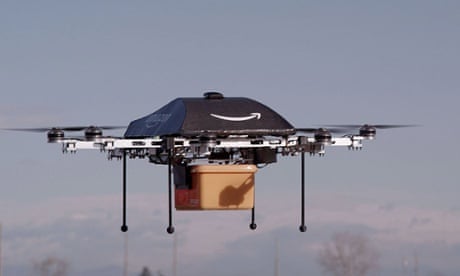A few countries including South Africa are setting the pace internationally on the development of commercial drones, while others are just banning drones completely.
France, Japan, New Zealand, South Africa, Sweden and the U.K. are among the world’s most progressive countries when it comes to introducing drone technologies in their airspace, according to a report in GlobalLegalPost.
South Africa’s drone rules became effective July 1.
New Zealand’s drone regulations go into effect Aug. 1. They take a different approach from others’ in that they make no distinction between drones used for commercial and non-commercial purposes, said Peter Lee of Taylor Vinters, writing in the first issue of Robotics Law Journal.
There are very real payoffs for the the industry becoming regulated, said aeronautical engineer Adam Rosman in a BusinessDayLive report. Rosman is managing director and founder of Johannesburg-based Aerial Monitoring Solutions.
“All countries are pushing for legislation, but only two others, besides South Africa, actually have something signed,” Rossman told BusinessdayLive. “The U.S. is still bickering, and it has 50 states to contend with. Many countries have simply banned the things outright; they don’t understand them and so are effectively ignoring them.”
Safety is always the No. 1 concern in aviation, Rosman said. “The aviation industry …everywhere in the world (is) driven by incident or accident. Unfortunately, it often takes a loss of life or a serious incident before regulations are altered,” Rosman said.
The Kenyan government banned drones for civilian use on Jan. 15. The ordinance advised operators to seek permission from the Ministry of Defence to fly a drone, but it was technically a ban, Dickens Olewe wrote in TheStar.
Olewe is a journalism fellow at Stanford University and founder of African skyCAM, a project seeking to revolutionize frontline reporting using drones in Africa.
“South Africa, unlike Kenya, chose a more informed and consultative route,” Olewe said. “It banned drones in June 2014…but promised to publish recommendations after a year, which it promptly did, and now South Africa is one of the world’s leaders in progressive drone lawmaking.”
Introduced July 1, South Africa’s drone rules immediately triggered criticism that they’re too stringent — there’s a 10-year jail sentence for illegal drone use — and unfriendly to private development. But Rosman predicts the new rules will enable substantial commercial opportunities across the African continent, says GlobalLegalPost.
Between now and 2025, $82.1 billion will be spent on drones in the U.S. alone, according to the Association for Unmanned Vehicles International. The industry is expected to generate 100,000 high-paying jobs, 70 percent of them within three years — and all in the civilian-commercial sector, BusinessDayLive reports. If the U.S. does not get its legislation in place quickly, the industry could lose $10 billion, the report said.
“At the moment, China is the biggest commercial UAV manufacturer and the U.S. the biggest UAV consumer in the world,” said Rosman, who dislikes the word drone. “But this is expected to shift to Africa, which will be the biggest commercial UAV operator and consumer within the next few years.”
All UAV eyes are on Africa as they are relatively low-tech and inexpensive to make, Rosman said. “Already a lot of African countries are interested in getting their own legislation in place and South Africa will be the hub that drives this.”
Africa is expected to be the first continent where drones fly cargo routes, Rosman said. Google just bought about 15 drone companies as it looks to roll out Wi-Fi in Africa — it will need high-endurance drones moving around the continent.
By restricting drone use, African countries exclude themselves from a fast-growing industry and they miss out on opportunities to use the technology for social good, Olewe said.
Drones allow farmers to survey their farms and they let emergency services get important information at a fraction of the cost of a helicopter. In journalism, the technology is a low-cost alternative to aerial imaging, and opens up “amazing possibilities in storytelling, for example producing 3D models, livecasting, data and sensor gathering and producing content for virtual reality platforms,” Olewe said.
“While I appreciate the valid concerns of the respective governments, the restrictive approach is counterproductive for this innovative technology, and prevents African countries from capitalizing on the rapidly expanding commercial UAV market,” Olewe wrote in TheStar. “It’s encouraging however that the Kenyan government is considering reviewing its restriction on civic uses cases but it’s crucially important that we encourage conversation not confrontation.”
Source: AFK Insider































